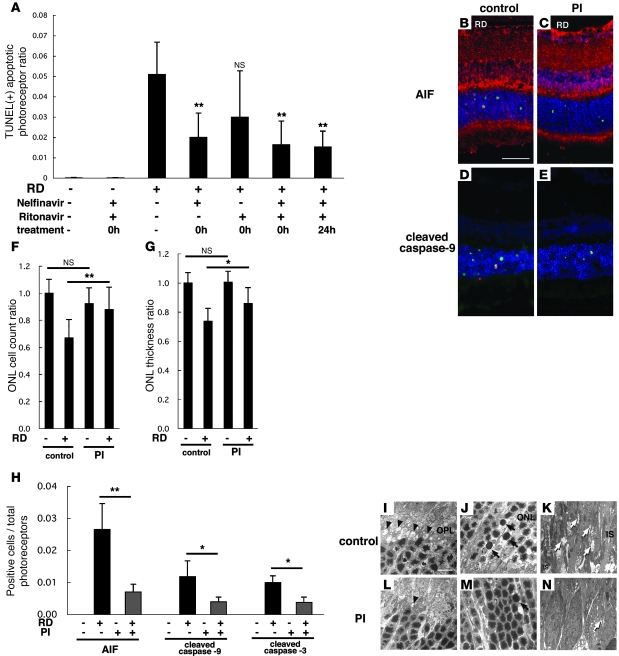Figure 6. Systemic oral administration of HIV PIs prevents detachment-induced photoreceptor apoptosis as well as AIF translocation and caspase activation in vivo.
Each animal received vehicle (2% ethanol in dH20), single PI (NFV or RIT), or double PI (NFV boosted with RIT) 3 times daily, starting immediately after induction of RD (0h) or 24 hours after RD. Although NFV plus RIT did not affect control retina without RD, NFV and NFV/RIT substantially reduced TUNEL-positive apoptotic photoreceptors after RD (A–E). NFV/RIT also blocked AIF translocation from mitochondria to nuclei (B, C, and H; AIF in red, TUNEL in green, DAPI in blue) and caspase-9 and -3 cleavage (D, E, and H; cleaved caspase-9 in red, TUNEL in green, DAPI in blue). PIs preserved the ONL cell count ratio (F) and ONL thickness ratio (G). NFV/RIT also maintained the ultrastructure of the retinas after RD (I–N). In the outer plexiform layer (I and L), rod spherules and cone pedicles were well preserved in the NFV/RIT-treated group (L, arrowheads; degenerated pedicles and spherules) in contrast to the vehicle group (I). In the ONL, photoreceptors with characteristics of apoptosis (arrows), namely cellular shrinkage and chromatin condensation, decreased in the PI-treated group (M) in contrast to the vehicle-treated group (J). In the inner segment of photoreceptors, a large number of mitochondria was swollen and degenerated in the vehicle group (K, arrows); in contrast, mitochondria was well preserved in the PI-treated group (N). n = 5 per group; *P < 0.05, **P < 0.01. Scale bars: 50 μm (B), 10 μm (I).

